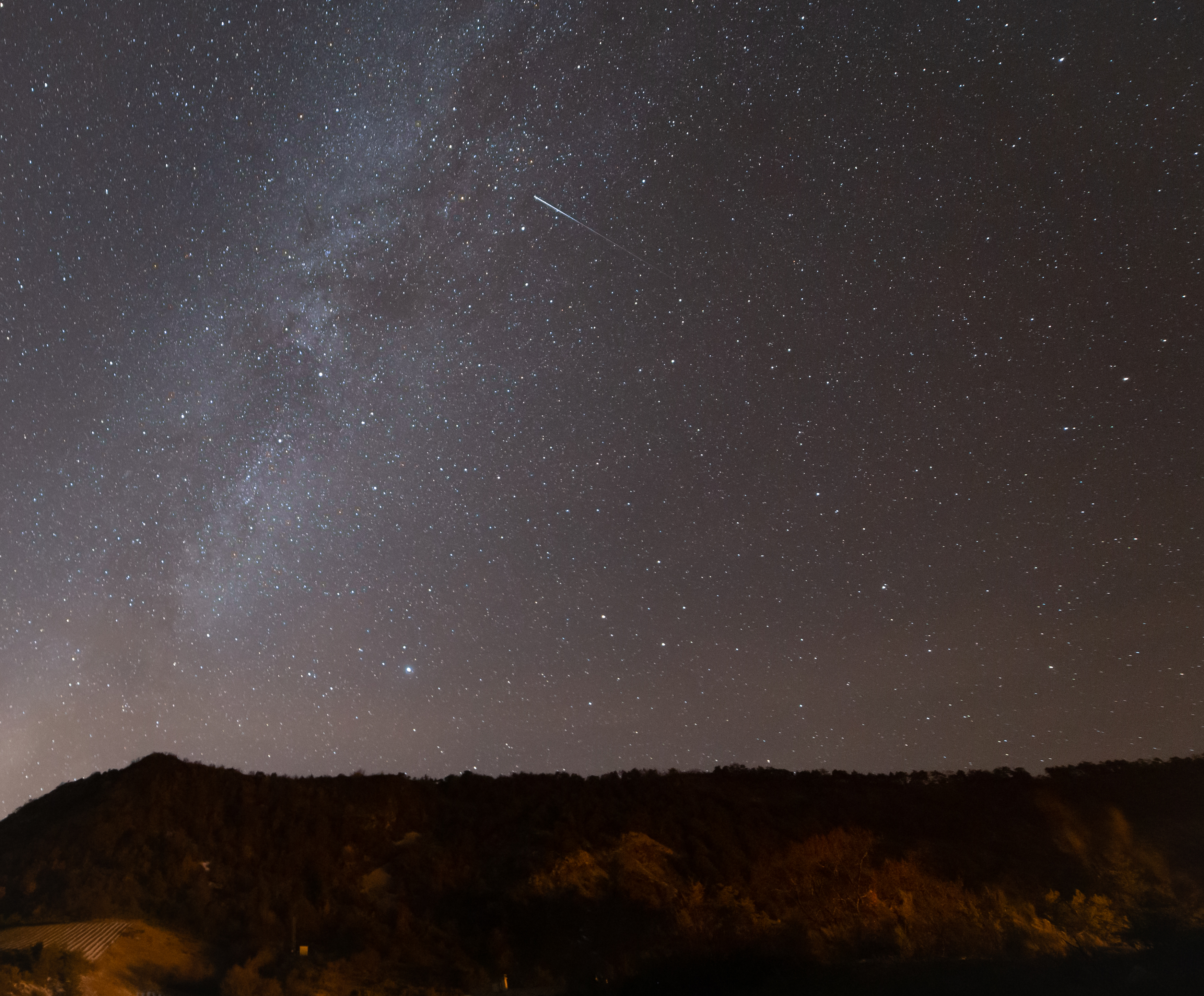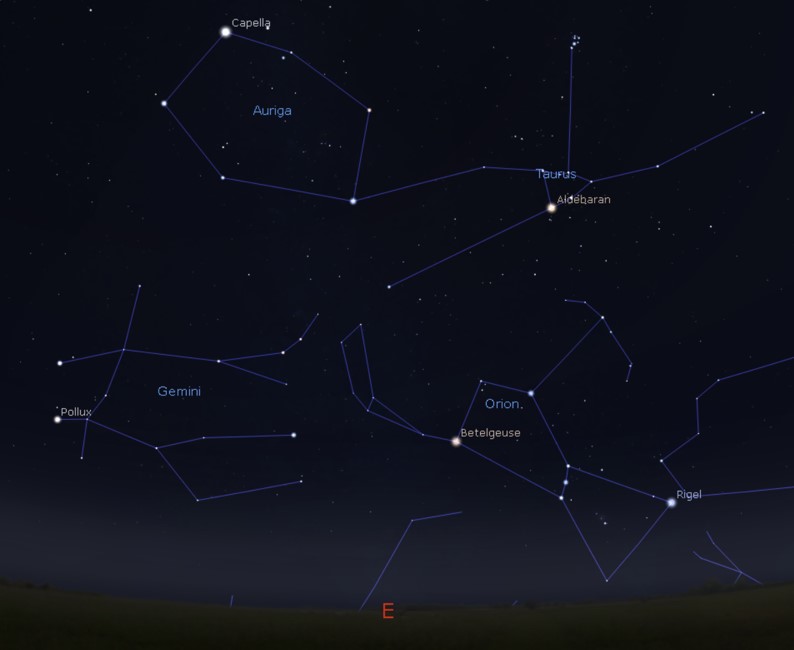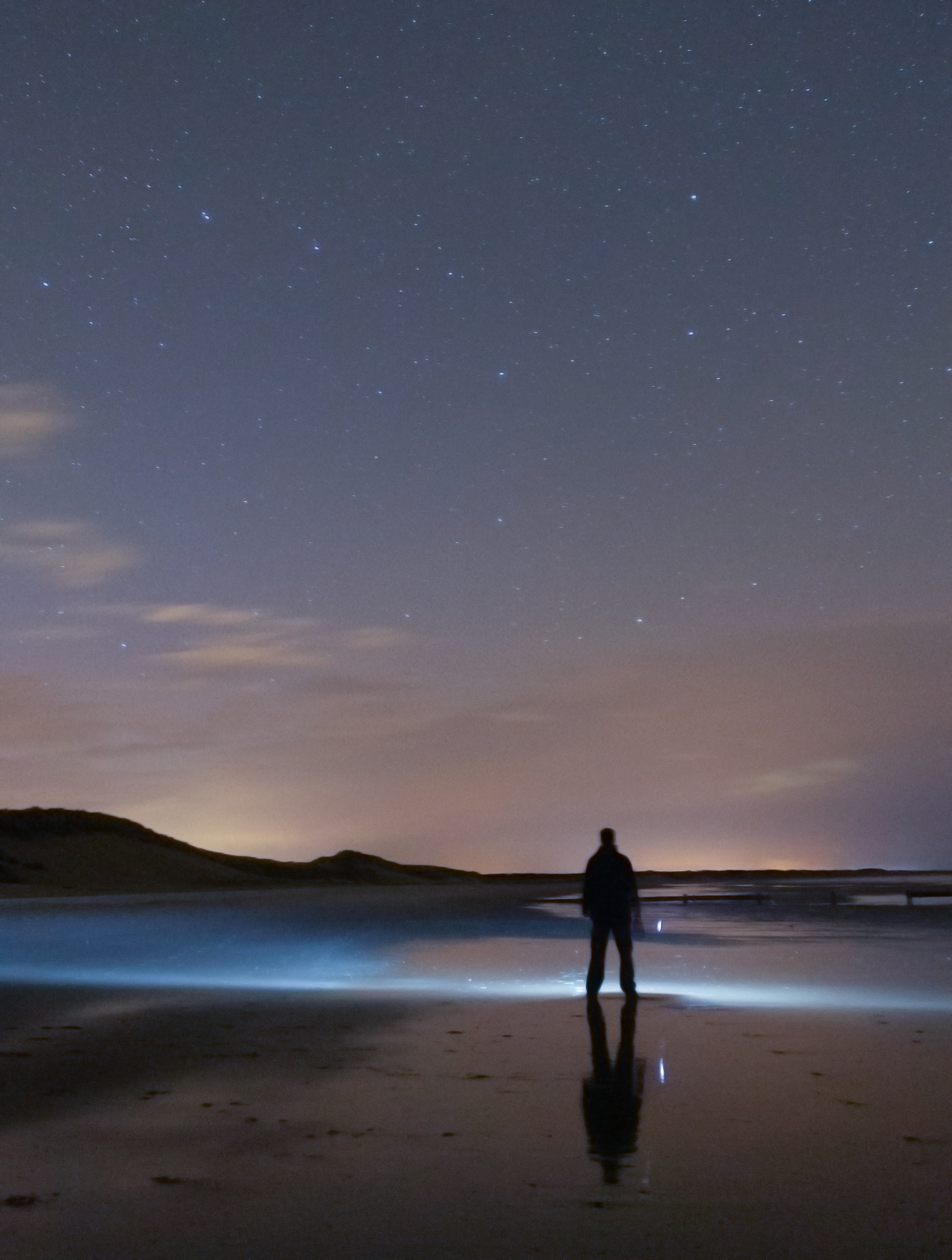The longest nights of the year fall in December, allowing astronomers plenty of time to get out and enjoy the night sky - and there’s plenty to see this month!
Jupiter - Saturn conjunction
December provides us with a rare and exciting opportunity to see Jupiter and Saturn remarkably close together in our early evening skies.
The two gas giants of our Solar System will make a striking pair all month, visible low in the south-west as it gets dark, and will spend several days close enough to be in the same field of view of small telescopes. The two will appear closest to each other on the evening of 21 December, where astronomers around the world will be hoping to capture an image of the two, together with a number of their brighter moons.
It’ll be the year 2040 before the two planets will meet again in our night skies, though on that occasion they’ll not appear as close to each other as they do this month.
This event comes about because the planets orbit around the Sun on roughly the same plane of inclination, or the ‘ecliptic’, which means that on rare occasions from our perspective here on Earth, the planets appear to pass close by each other in the sky.
In reality, Saturn will be almost twice as far away from us as Jupiter, being 1,620 million kilometres (1,000 million miles) away from Earth, while Jupiter is ‘just’ 880 million kilometres (540 million miles) away.
Tips to see the conjunction:
- Find an unobstructed view to the south-west, roughly the patch of sky where the Sun sets. The two planets are low to the horizon from here in the UK, so ideally find some higher ground with no buildings or trees in your line of sight.
- Be prepared and get outside early. The best time to view these planets is the early evening, between sunset (just before 4pm on 21 December) and when the planets themselves set below our horizon at around 6.30pm here in the UK.
- Wrap up warm. It sounds obvious, but with the temperatures dropping, and especially if there’s a breeze, just putting an extra top on might not be enough to keep you warm. Put on several layers, and take a scarf, hat and gloves!
- If you have access to binoculars, a telescope, or a camera with a zoom, get them ready and take them with you.
If you’re lucky enough to capture a photo of the two planets this month, share it with us @spacegovuk, and we’ll retweet our favourites!

Geminid meteor shower
December hosts one of the most spectacular meteor showers in the calendar, the Geminids.
Often producing well over 100 meteors an hour, this month’s peak between 13 and 14 December coincides with a nearly new Moon. The darker skies this provides means you’ll be much more likely to see some of the fainter meteors as they zip across our night sky.
The meteors we see are tiny fragments of rock and dust left behind the rocky asteroid known as 3200 Phaethon, which orbits the Sun approximately every year and a half. The Geminids were first observed in 1862, although fascinatingly, we only discovered the asteroid responsible for them in 1982.
The meteor shower is very often best observed after midnight, and while Geminids will appear to radiate from the patch of sky in which the constellation of Gemini sits, they can appear anywhere in the sky.

Encounters with the Moon
The full Moon falls towards the end of the month on 30 December, while those hunting darker skies to enable them to see more stars, meteors and other fainter night sky objects, will be waiting for the nights around the new Moon, which falls on 14 December.
At dawn on the morning of the 12 December, Venus will rise shortly after a tiny slice of the Moon in the south-eastern sky.
Look high in the south on the evening of 23 December to see Mars a short distance above the Moon. Mars is considerably less bright now than in recent months, but its reddish hue still gives it away as being our Solar System’s red planet.
On the evenings of 16 and 17 December, the 5 - 10%-illuminated Moon will accompany the gas giants Jupiter and Saturn in the early evening skies.
Other celestial objects to look for
The great Andromeda Galaxy is still visible throughout the night to those with darker skies. Look high in the south in the evening, above Mars and the Pleiades, for a small fuzzy patch of sky (see the photo in October’s blog as a guide of what to look for).
Ursa Major is the third largest constellation in the night sky. It contains an asterism (or group of stars) that some people call the Plough, Big Dipper, or the Saucepan!
While it is best observed in springtime, have a look to the north after dark and see if you can spot this popular astronomy target. We’ll revisit it in the coming months!

International Space Station over the UK
There are some high, bright passes of the international space station over the UK this month (though you’ll have to be up quite early to see the super-bright passes later in the month!)
| Best ISS passes over UK (times may vary slightly depending on location) | |||
| Date | Time | Where will it come from? | Where will it head? |
| 01-Dec | 18:02:08 | W | ESE |
| 02-Dec | 17:14:35 | W | E |
| 03-Dec | 18:03:50 | W | SSE |
| 04-Dec | 17:16:15 | W | ESE |
| 05-Dec | 18:05:34 | W | SSE |
| 06-Dec | 17:17:53 | W | SE |
Winter Solstice
The winter solstice falls on 21 December this year (the same evening as the closest point of the Jupiter - Saturn conjunction), marking the point where the North Pole reaches its maximum tilt away from the Sun, with the Sun therefore at its lowest elevation in the sky in the Northern Hemisphere.
The result is nearly nine more hours of darkness than at the summer solstice in six months time - making it a great time of year for some astronomy.
It also marks the shortest day of the year, so while December may seem dark and cold, remember that from 21 December, the amount of daylight each day will start to increase again!
Thanks for reading. Wishing you clear skies, and a peaceful holiday season.
2 comments
Comment by Kelvin posted on
Thanks for this. I am new to astronomy and have borrowed a telescope. Excitingly waiting for clear skies.
Comment by Chris Lee posted on
Bravo for setting up this astronomy blog!